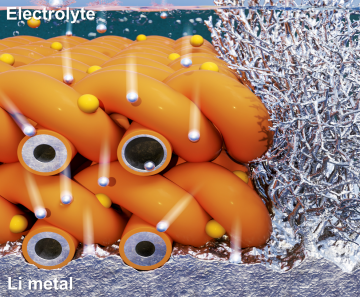KAIST
BREAKTHROUGHS
Research Webzine of the KAIST College of Engineering since 2014
Spring 2025 Vol. 24AI-based Vehicle Kinematic Response Prediction for Small Overlap Crash
AI-based Vehicle Kinematic Response Prediction for Small Overlap Crash
An AI-based vehicle kinematic response prediction methodology has been developed for small overlap tests using only conceptual vehicle design information.
Article | Spring 2023
Ensuring vehicle safety is a key factor in the vehicle industry. During the vehicle development phase, vehicle crash safety assessments allow vehicle companies to consider the safety of passengers in the event of a crash. As a result, safe vehicles are widely available on the market, significantly reducing casualties in traffic accidents.
Among the various crash tests, the small overlap crash test by Insurance Institute for Highway Safety (IIHS) is the strictest test, in which 25% of the front part of the driver’s seat collides with an obstacle at a speed of 64 km/h. According to a study showing that about 25% of traffic accident deaths occur in local collisions, small overlap crash test has been conducted since 2012. The safety level of the small overlap test is evaluated in four types of ratings according to the test category, and the assessment is based on the degree of damage to the car’s body structure on the driver’s side and the degree of damage to the dummy (human model).
In order to understand the impact performance during the vehicle development phase, a finite element analysis or an actual crash test must be performed. This incurs a considerable computational cost, and the analysis has been compromised due to a lack of studies on the correlation between initial vehicle geometry and crash safety. It is still difficult to quantitatively define the small overlap collision behavior, so vehicle companies still have to judge the results subjectively based on the developer’s experience.
What if AI could be used to predict vehicle safety on its own? What if AI could learn the relationship between vehicle safety and vehicle structure to inform the engineers? Professor Namwoo Kang from CCS Graduate School of Mobility and his Smart Design Lab at KAIST propose a machine learning-based vehicle kinematic response prediction process for small overlap crashes and developed the entire process into a GUI program so that it can be easily used in the industry.
The proposed process consists of three stages as shown in Figure 1: (1) database construction, (2) prediction model construction, and (3) GUI program development. First, vehicle design variables including distance between specific parts of the vehicle, basic vehicle specification information (e.g., overall length/width/wheelbase/weight), and categorical variables (e.g., chassis/powertrain/lower arm type) were collected. In addition, an object detection model was developed to extract the vehicle trajectory after a small overlap collision. Then, an optimal prediction model was constructed using a random forest model, which is a machine learning method. Finally, the entire process was developed into a GUI program to predict vehicle kinematic response based on a conceptual design. The prediction model can be continuously updated with future data by using the GUI program.
This proposed mechanism can quickly predict small overlap behavior with the initial design of a vehicle structure. In addition, it can inform vehicle designers and engineers regarding vehicle design variables that may significantly affect crash performance even at the conceptual stage.
Most Popular

When and why do graph neural networks become powerful?
Read more
Smart Warnings: LLM-enabled personalized driver assistance
Read more
Extending the lifespan of next-generation lithium metal batteries with water
Read more
Professor Ki-Uk Kyung’s research team develops soft shape-morphing actuator capable of rapid 3D transformations
Read more
Oxynizer: Non-electric oxygen generator for developing countries
Read more
